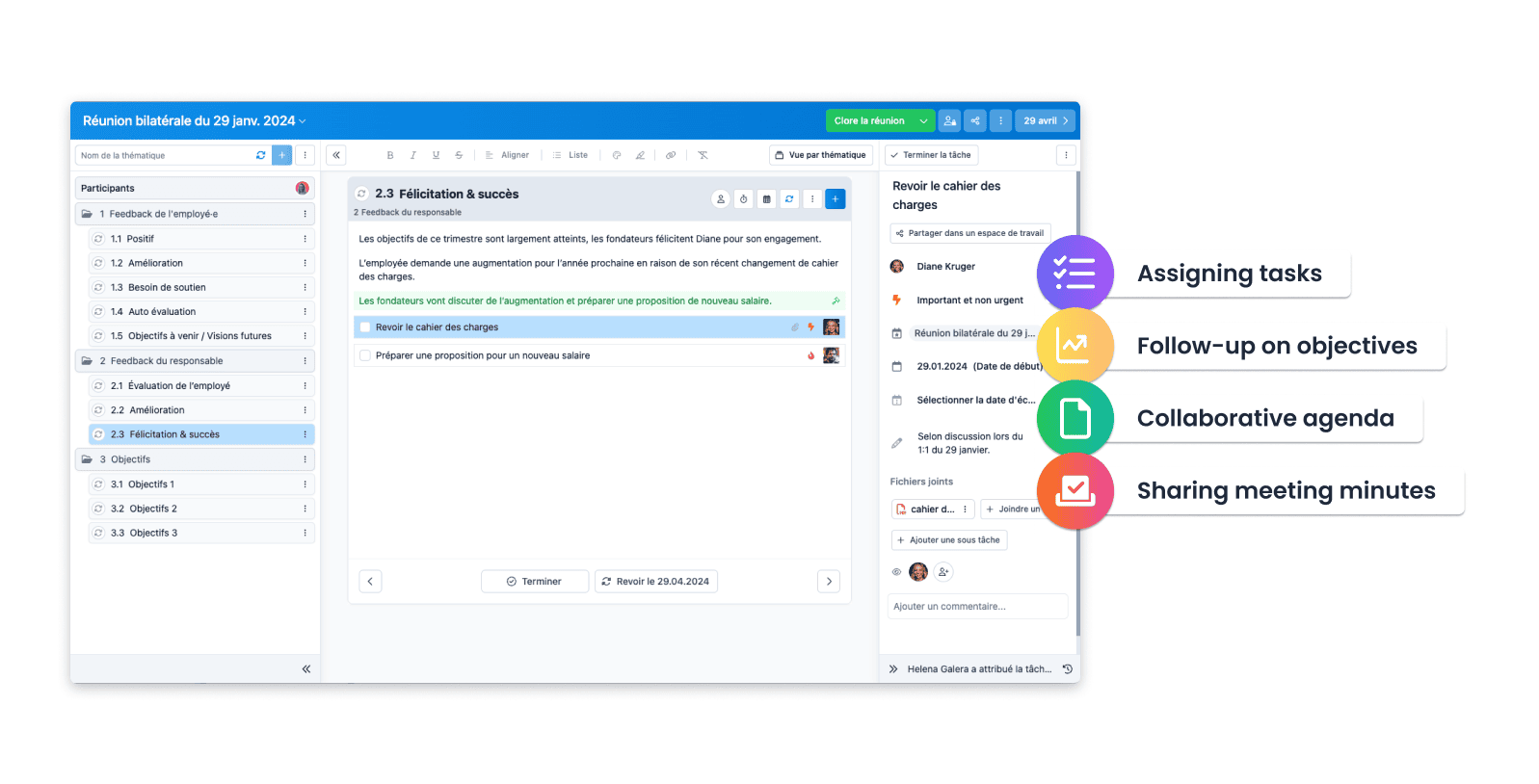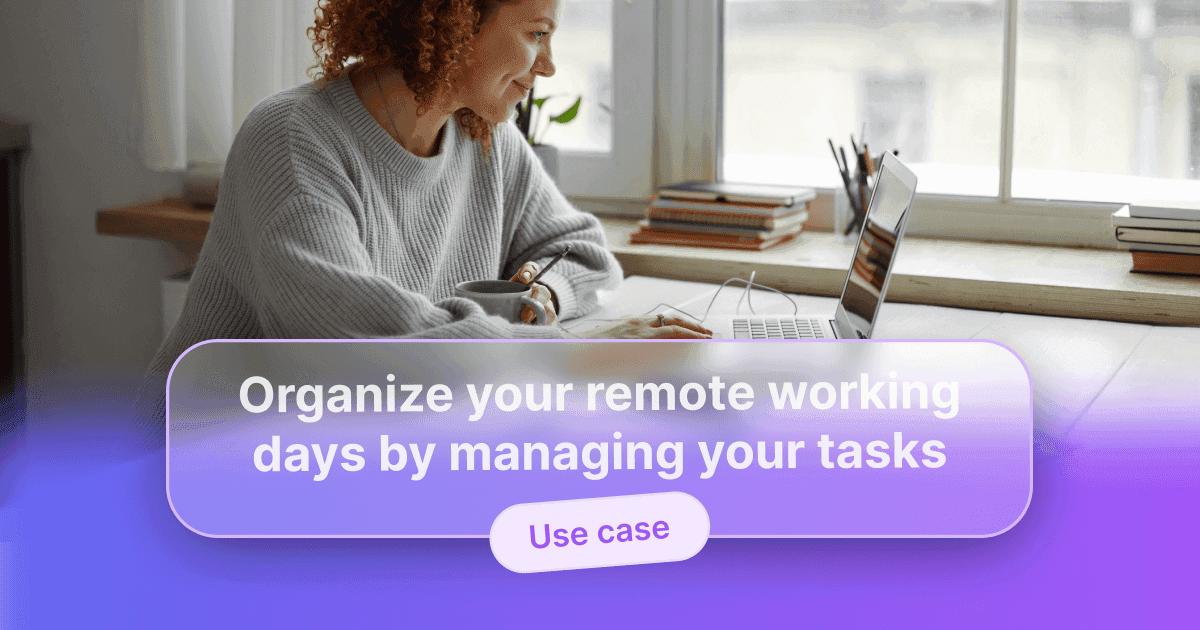Held once a month, quarter, or half-year, as required, these privileged meetings provide a confidential and open communication space, encouraging in-depth discussion of individual and collective objectives. They create a valuable opportunity to discuss each employee's specific challenges and needs, fostering better mutual understanding. Moreover, these meetings provide a framework for recognizing individual achievements and contributions, reinforcing a sense of accomplishment and belonging to the team. Thanks to these personalized exchanges, bilateral meetings contribute to more effective personnel management, more focused professional growth, and solid, fulfilling working relationships.
Key topics for a bilateral meeting
During a bilateral meeting between a team leader and an employee, several key topics must be addressed to ensure effective communication and optimal management. Here are some of these topics:
1. Ongoing assessment
Discuss objectives for the current period and assess progress and results achieved. Identify successes and areas requiring further attention.
2. Professional Development
Explore opportunities for employee development, training, and professional growth. Identify skills to be strengthened and possible progression paths.
3. Feedback
Exchange constructive feedback on work performed, highlighting strengths and addressing areas for improvement. Encourage open dialogue to stimulate continuous learning.
4. Needs and Challenges
Allow employees to express their needs regarding resources, assistance, or support to accomplish their tasks. Discuss possible obstacles and find solutions together.
5. Work-Life Balance
Address workload-related issues, stress levels, and work-life balance. Identify measures to support employee well-being.
6. Projects and Initiatives
Discuss future projects, new initiatives, and potential employee contributions. Encourage active participation and creativity.
7. Management feedback
Offer employees the opportunity to share their feelings about management, work methods, and team communication. Foster an environment of trust and continuous improvement.
8. Focus on Vision
Ensure that the employee understands and adheres to the team or company's overall vision, values, and goals.
9. Resources and Support
Identify the resources required for the associate's success and ensure that he/she has the proper support to carry out his/her tasks.
10. Long-Term Planning
Examine longer-term perspectives and discuss the employee's career aspirations and how these align with team or organizational goals.
"Enabling discussions in bilateral meetings, in a more intimate way and with a long-term vision, brings a notable benefit to the employee's career in the company. It makes them feel valued, heard and recognized above all. Setting clear, long-term objectives is a real motivator for them."
Marie Rudaz-Jaeggi, AmbitionSuccess.ch - MORGES
Team leaders and employees can establish fruitful collaboration, foster professional development, and maintain a positive working climate by addressing these topics regularly and in-depth at bilateral meetings.
Use WEDO to keep track of your bilateral meetings!

With WEDO, you can prepare your agenda jointly with your manager or colleague. In this way, each participant can prepare the questions or topics to be addressed.
Generally speaking, the agenda items for a bilateral meeting are recurrent. WEDO enables you to set the topics so that they recur from one time to the next to ensure that discussions are followed up and that objectives evolve.
Once completed, the minutes are locked and remain available to both participants for consultation.



